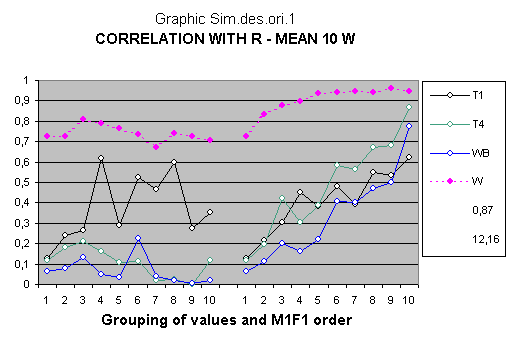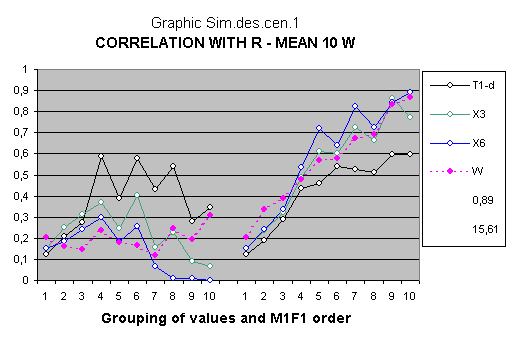6.b.2) Genetic problems
Functional limitations!
Despite other achievements, until this phase, the Multidimensional Correlation Index (MCI) of the artificial IQ vector W is much higher than the observed correlations.
Incorrect simulation

The correlations require something else to diminish sufficiently. Finally, after studying different options, the researches decided to introduce some elements of functional limitations, especially in the mechanisms of the initial development of intelligence.
They will arise after the Mendelian genetic combination, and with the filter of gene affinity, some genetic problems may diminish the expected intelligence quotient (IQ) 30 points. The amount comes from the optimization parameter in the sensitivity analysis within the simulation of the evolution of intelligence.
Logically, there must be previous genetic problems not reproducing in the next generation; so, it is compulsory to include sudden increments in IQ of half of 30 points with the same probability of occurrence. Half because the effect on the final capacity would be conditioned by the ability of the other ancestor, taking into account the presence of the Logical Verification of the Information method (LoVeInf)
By the way, these functional limitations play a part in the evolution model of the Conditional Evolution of Life about the nature of intelligence, although there was no special mention to them to simplify the presentation. However, they did appear, in all clarity, in the simulation of the evolution incorporated in the Esnuka program (1992) following CEL guidelines.
The instructions of the evolutionary game Esnuka say, "the black or white circle in the middle of the ball represents the number of fouls accumulated by the player. The genes are carriers of these fouls and, as such, can change through evolutionary processes. Furthermore, the number of fouls represents the probability of a genetic accident throughout these steps; an accident means the player is reduced to the lowest state within the scale."
According to the game Esnuka and with the stochastic analysis, the functional limitations will appear once every five times in the negative sense and the positive sense, but with half the intensity.

The explanation of the existence of the functional limitations can be diverse; the following are among the probable causes:
Not all intelligence functions are on the same chromosome or portion of DNA, following the Mendelian genetic combination. Therefore, it causes additional discontinuities in the final determination of ability.
There is the necessity of specific materials in the initial development; for example, food craving during pregnancy. Not everybody has the same power to produce proteins; lacking some of them could cause the no-expression of the genetic information; again, this could provoke gaps regarding cognitive abilities transmission.
The conclusion of the study about discriminating pre- and postnatal factors from the Medical School of the University of Pittsburgh would fit perfectly here. These factors are part of the structural development of intelligence, and they are not environmental factors in a strict sense. In other words, the technology of materials is genetic; another matter is the necessary elements at any moment, and the lack of these elements will not usually be the case.
The complementarity to memory or other functions
Genetic accidents in the broadest sense, including exceptional cases with certain risk factors
Correct paternity!
Environment. It should have some influence, even if it is small!
...
From another point of view, the functional limitations would correspond to the expression the black sheep of the family up to a certain point.
Correct simulation

The q060 graph shows the result of the Global Model, with the addition of the genetic problems and attuned with an average of ten W variables. The accuracy of the adjustment reveals both visually and by the level of the MCI of W (16.85) that has gone down to standards of the GMCI (15.61)
In the end, the variable W is as the IQ vectors observed in the longitudinal study.
